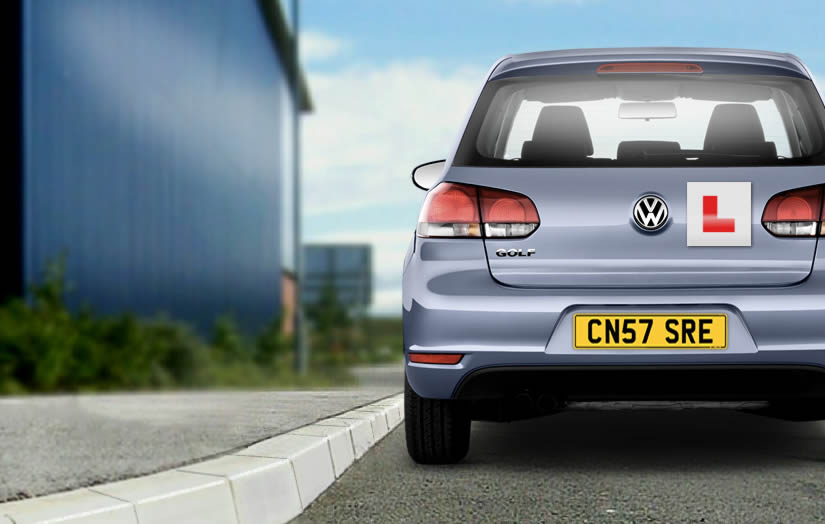Moving off and stopping on the left is a procedure that as a learner driver, you should be practicing from the moment you start driving. This is because stopping on the left can often take leaner drivers a long time to master.
During the practical driving test, stopping on the left is something that the examiner is keen to see test candidates demonstrate. If fact, it’s a procedure that they can easily request up to 5 or 6 times, so there’s plenty of opportunities to get it wrong.
Practice, as they say makes perfect, so here, we’ll provide tips and advice for those of you that are teaching a learner driver independently from a driving instructor to park up and stop on the left side of the road.
Guided, Prompted, Independent
So that you’ll know exactly what’s required to teach, start off by read up on the stopping on the left in an automatic car tutorial. When teaching a learner, there are three main phases that you’ll be going through:
Guided
When teaching a learner driver, during the early phases of tuition, you’ll need to provide fully guided tuition. This means that you’ll be telling them that they will be stopping on the left, where you want them to stop and you’ll be telling them exactly how to do it. You’ll also need to ensure that it’s safe and legal to carry out the procedure. You’ll need to tell the learner:
- Which mirrors to check
- Whether or not a signal is necessary
- Speed adjustments
- Steering adjustments
- Lining up reference markers
- Securing the car when stopped
Once stopped, you’ll need feedback. Ask the learner how they think it went and what, if anything went wrong or could be improved. If something did go wrong, you should explain this, how to correct it and that you’ll work on improving the issue on the next stop.
Prompted
As the learner becomes more confident with stopping on the left, you go from guided to prompts. This means that you provide a greater level of independence for stopping on the left, but prompt them on the important aspects, or areas that they might have a tendency to forget. This could be for example:
‘Is it safe and legal where you’re going to park?’
‘Which mirrors do we need to check before stopping on the left?’
‘Is a signal necessary?’
‘Are you happy with the distance from the kerb?’
Through the prompted phase of teaching, the learner needs to be planning ahead. This involves scanning the road ahead for a safe and legal place to stop.
Independent
We then transition from prompted, to independent. At this point, we aim for the learner to stop on the left, fully independent without the need for any prompting. Even when the learner is independent, they’ll not get it right every time and may still require prompting.
This is normal and the learner can often feel as though they’re not making progress. Remember that even though they might appear confident and require less of your input, they still lack in experience and will on occasion need help.
Use Reference Points
When it comes to judging how far objects are away from the car, most learner drivers lack spatial awareness. Spatial awareness and driving comes with practice, time and experience, but in the meantime, they’ll need help in the form of reference points.
The how to park next to the kerb without hitting it tutorial offers reference points and observational markers to help leaners park an appropriate distance from the kerb. Continue with the reference points and as they gain confidence and experience, they’ll use them less over time.
Safe, Convenient and Legal Position
When teaching stopping on the left, always reference the Safe, Convenient and Legal Position (SCALP) routine. Throughout the ‘guided’ phase of teaching, you’ll be telling the learner where to park, but as you transition to prompted and independent, use a combination of specifying where to park, but also instructing the learner to park up on the left ‘when they’re ready’.
In other words, they will need to choose a location that is safe, convenient and legal. During the driving test, examiners will use a combination of both, so it’s important that you teach both during lessons. Each and every time the learner stops on the left, ask them to asses their surroundings to see if there are any issues with where they’ve stopped. If there are, explain them.
Use a Variety of Roads
During the test, the examiner will also use a variety of roads where they’ll ask the test candidate to stop on the left. An examiner will never trick a test candidate by asking them to park somewhere illegal, but they may use roads that are busy, or have a lot of parked cars etc.
Use a Variety of Traffic Conditions
As with a variety of roads, examiners can often ask test candidate to stop on the left on very busy roads. It doesn’t always seem an appropriate place to stop, but it’s legal. Stopping on the left and moving off on a very busy road can be highly stressful for a test candidate, so it’s be to prepare them and park up on roads that have a variety of traffic conditions.
Can You Fail the Driving Test When Stopping on the Left?
Yes, you can fail a driving test when stopping on the left. Common reasons include:
- Failing to carry out appropriate safety observations
- Failing to signal
- Slowing down too soon (hazardous to following traffic)
- Stopping too far away from the kerb
- Hitting the kerb
- Mounting the pavement
